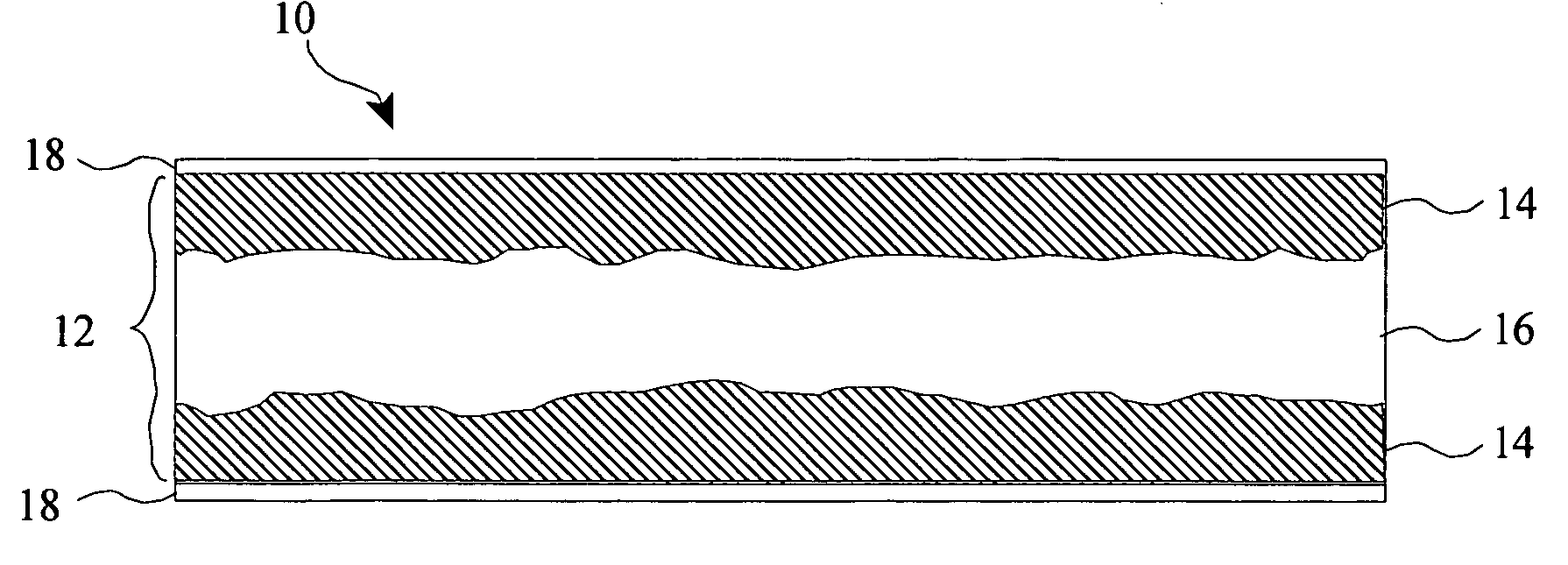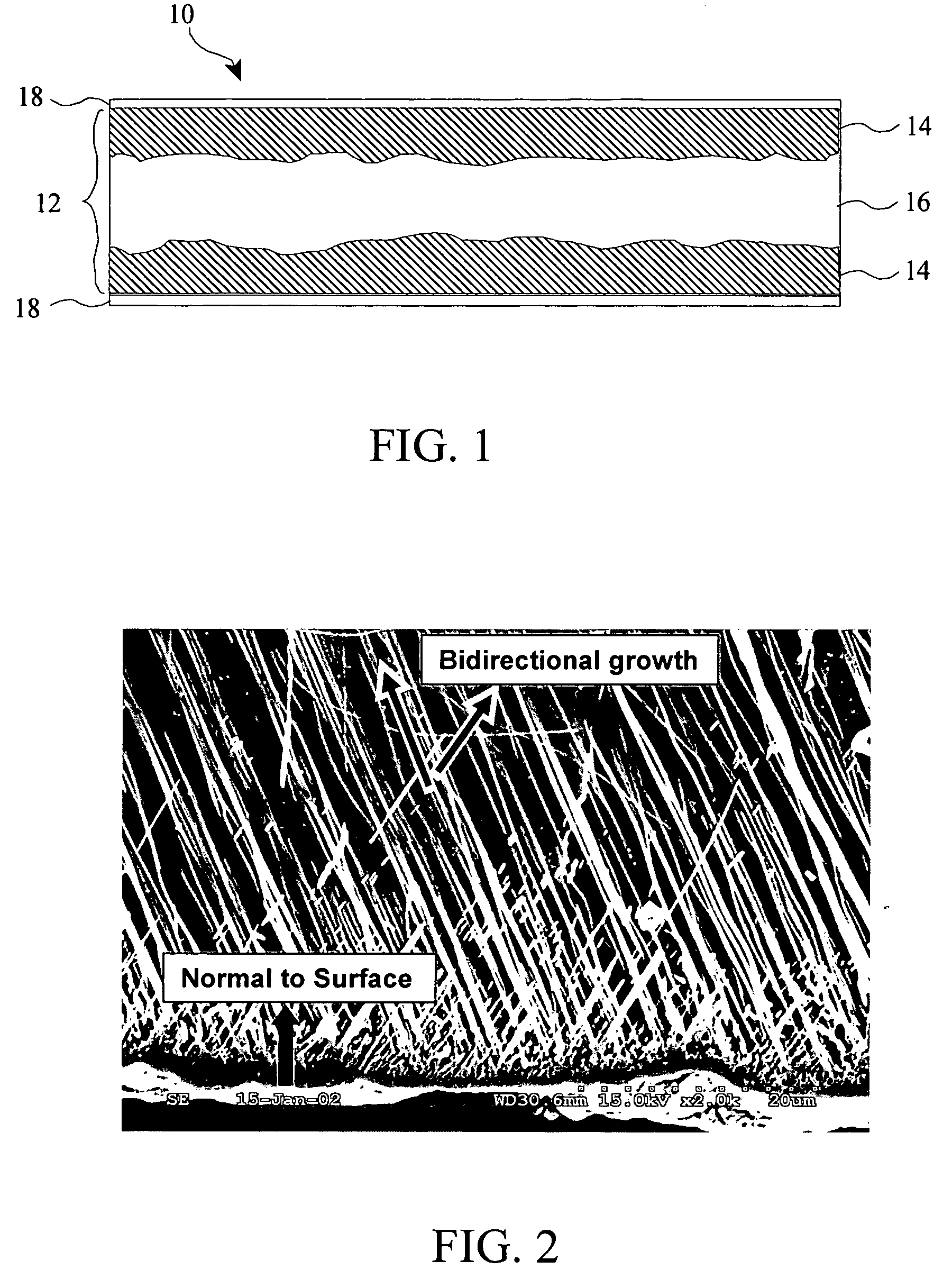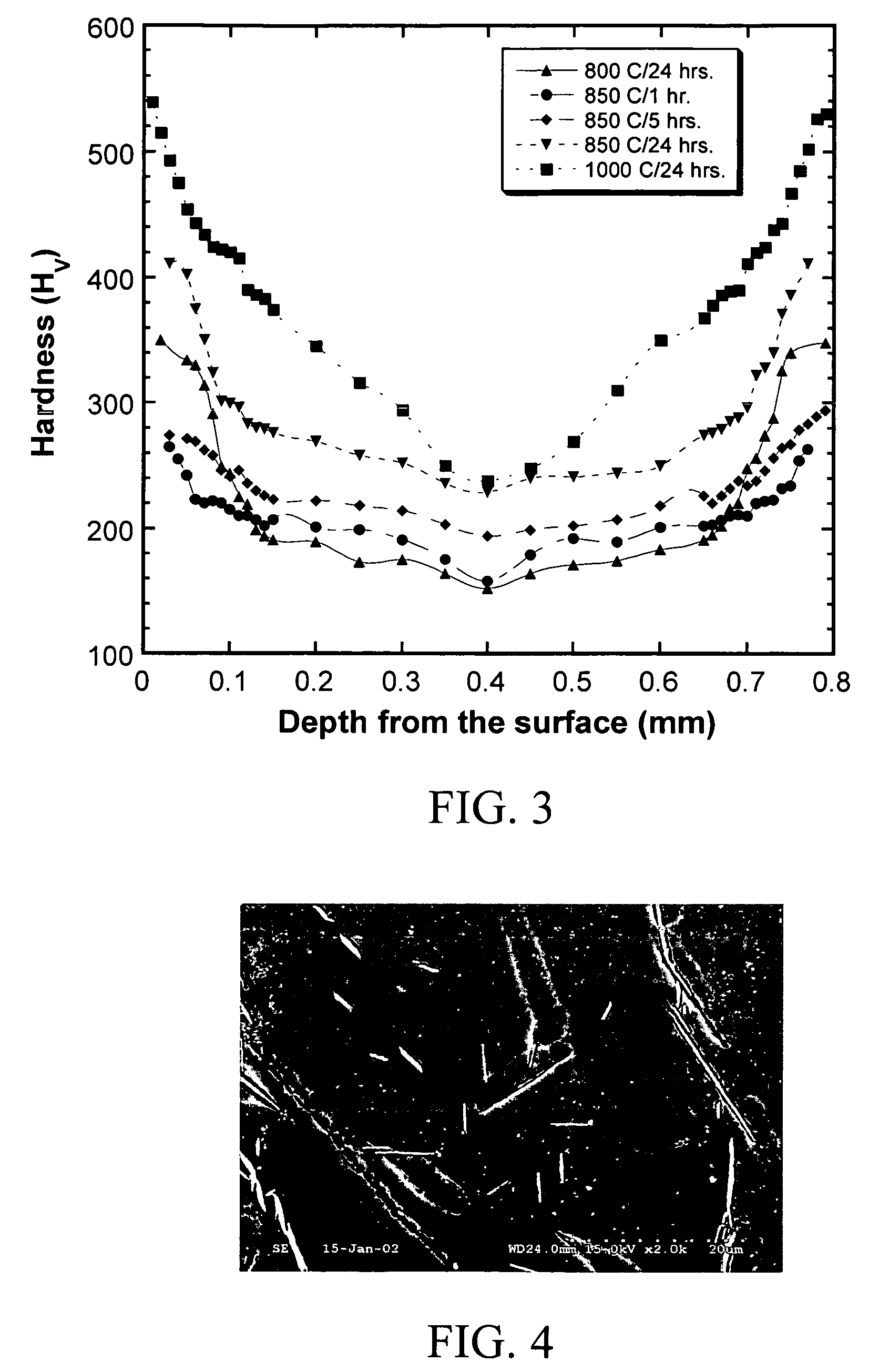Titanium boride coatings on titanium surfaces and associated methods
a technology of titanium boride and coatings, applied in the direction of metal borides, solid-state diffusion coatings, coatings, etc., can solve the problems of equipment expense, lower hardness of titanium and its alloys, corrosion resistance, lower oxidation resistance, etc., and achieve high wear, corrosion and oxidation resistance, and resistance to galling and seizure
- Summary
- Abstract
- Description
- Claims
- Application Information
AI Technical Summary
Benefits of technology
Problems solved by technology
Method used
Image
Examples
example 1
[0071]A commercial grade titanium sheet having a thickness of 1 mm was provided. A powdered mixture of 50 wt % amorphous boron (325 mesh available from Alfa Aesar, Inc.), 15 wt % anhydrous sodium carbonate, and 35 wt % activated charcoal was evenly mixed in an argon environment to avoid oxidation and blended for 24 hours in a tumbling mill. The powdered mixture was then packed around the titanium sheet to a depth of about 25 mm to form a boron titanium precursor. The precursor was then placed in a resistance heated furnace and heated to about 850° C. for about 24 hours. The titanium sheet was then allowed to cool. The surface hardened region was characterized by whiskers similar to those of FIG. 2 having an average length of about 78 μm, a maximum surface hardened region thickness of over 0.2 mm, and a maximum surface hardness of 411 kgf / mm2.
example 2
[0072]A liquid boron source medium is provided by preparing a molten solution of 25 wt % anhydrous borax, 45 wt % NaCl, and 30 wt % carbon. The liquid boron source is placed in a tantalum crucible and a 34-tooth β-titanium (Ti-10V-2Fe-3Al) gear is then immersed in the liquid boron source. The liquid boron solution is heated to about 860° C. and held for about 15 hours. A thin borided region having a thickness of about 0.1 mm is formed.
example 3
[0073]A gaseous boron source medium is provided by preparing a mixture of 2 vol. % boron chloride, 40 vol. % wt % hydrogen, and balance argon in an enclosed chamber. The mixture is pumped at a rate of 1 cm / sec into enclosed chamber containing an α-titanium (Ti-5Al-2.5Sn) gun barrel having a 0.22 inch inner diameter. The chamber is heated to about 880° C. prior to the entry of the gas using a resistive heating element. The chamber is held at this temperature for about 10 hours. A borided region having a thickness of about 0.25 mm is formed on the inner barrel surfaces and the exposed outer surfaces.
PUM
| Property | Measurement | Unit |
|---|---|---|
| temperature | aaaaa | aaaaa |
| diameters | aaaaa | aaaaa |
| diameters | aaaaa | aaaaa |
Abstract
Description
Claims
Application Information
 Login to View More
Login to View More - R&D
- Intellectual Property
- Life Sciences
- Materials
- Tech Scout
- Unparalleled Data Quality
- Higher Quality Content
- 60% Fewer Hallucinations
Browse by: Latest US Patents, China's latest patents, Technical Efficacy Thesaurus, Application Domain, Technology Topic, Popular Technical Reports.
© 2025 PatSnap. All rights reserved.Legal|Privacy policy|Modern Slavery Act Transparency Statement|Sitemap|About US| Contact US: help@patsnap.com



